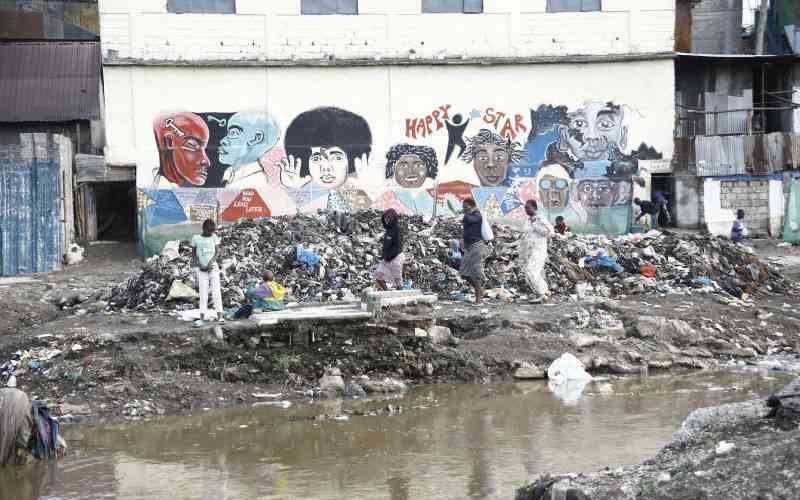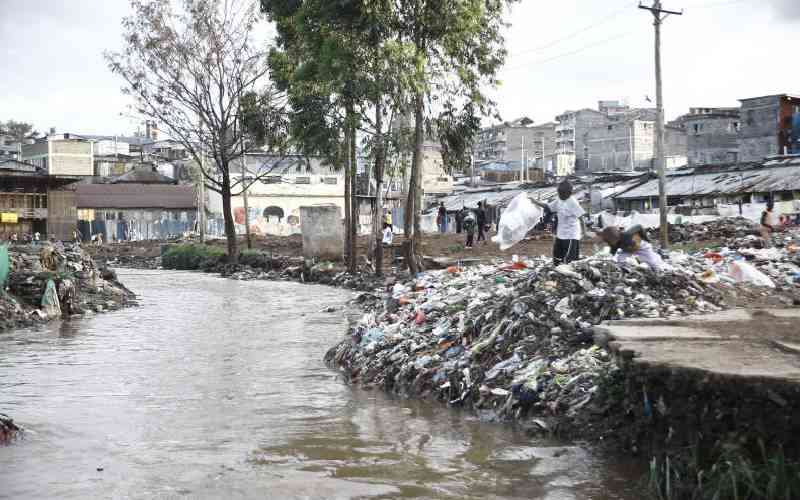By Jeckonia Otieno
Kenya: Two million people choke to death every year as toxic plumes of smoke billow into the atmosphere from domestic kitchens, vehicles and factories.
Half of these deaths are due to pneumonia in children under the age of five, born of poor families in developing countries.
The World Health Organisation (WHO) notes that urban outdoor air pollution accounts for 1.3 million deaths worldwide every year.
Those living in middle-income countries disproportionately experience this burden. Exposure to air pollutants is largely beyond the control of individuals and requires the intervention of public authorities at the national, regional and even international levels.
The United Nations Environment Programme (UNEP) notes that the most common air pollutants in urban environments include sulphur dioxide, suspended particulate matter, nitrogen oxides, ozone, carbon monoxide and lead.
Fossil fuels
Combustion of fossil fuels in stationary sources leads to the production of these gases. Petrol-fuelled motor vehicles are the principal sources of these gases, whereas diesel-fuelled engines emit significant quantities of particulates.
Increasingly these pollutants are finding their way into previously secure homes in Nairobi and elsewhere. The body charged with enforcing environment laws in Kenya — the National Environment Management Authority (Nema) — says it is unable to act against pollutants in many cases due to loopholes in the law.
A visit to some of the homes affected by pollutants reveals that most are next to alleys that are supposed to be walkways but have been turned into shantytowns and filthy kiosks.
In some housing estates, shanties have been built to lean on concrete walls and inhabit- ants of these shanties use mostly biomass for fuel. Some of the worst affected areas are in residential and industrial zones.
One of the residential estates affected by small-scale polluters is Woodley Court, adjacent to Nairobi’s Toi Market. Traders preparing food emit smoke from their kitchens and often this forces inhabitants of this estate to keep their windows shut during the day. Pollution is pervasive in Embakasi, Baba Dogo and Athi River which are right next to heavy-duty factories.
The World Health Organisation estimates that three billion people still cook and heat their homes using solid fuels in open fires and leaky stoves. About 2.7 billion burn biomass like wood, animal dung, crop waste and a further 400 million use coal.
Most of these people are poor and live in shantytowns in developing countries. This, therefore, means that the emissions into the atmosphere could be above recommended rates and are dangerous. Such cooking and heating produces high levels of indoor air pollution with a range of health-damaging pollutants, including small soot particles that penetrate deep into the lungs.
In poorly ventilated dwellings, indoor smoke can be 100 times higher than acceptable levels for small particles. Exposure is particularly high among women and young children who spend much time near the domestic hearth.
Stay informed. Subscribe to our newsletter
When unplanned structures around estates emit fumes, the gases rise and fill the houses nearby since they lack chimneys to direct the flow of smoke.
The WHO estimates that nearly two million people die prematurely from illnesses that arise from indoor air pollution due to use of household solid fuel.
Forty-four per cent of these deaths are caused by pneumonia while 54 per cent are due to chronic obstructive pulmonary disease, and two per cent of the deaths stem from lung cancer.
This can also result from secondary smoke that fills the homes of those who do not use such fuel but are unfortunate enough to be living nearby.
Pneumonia deaths
Nearly 50 per cent of pneumonia deaths among children under five are due to particulate matter inhaled from indoor air pollutants. The deaths are mainly due to acute lower respiratory infections.
Every year more than one million people die from chronic obstructive respiratory diseases that develop from exposure to such indoor air pollutants.
Apart from pneumonia, chronic obstructive pulmonary disease and lung cancer, other health impacts include inflammation of the airways and lungs, impaired immune response and reduced capacity by blood to carry oxygen.
The government tries to reduce air pollution sources, which may be determined by the minister in charge of environment in consultation with Nema.? However, Nema is often unable to enforce air pollution restrictions owing to gaps in the law or lack of resources in terms of staff and finances.
The growing number of informal housing, especially around the well-planned residential zones, has also stretched the authority’s capacity.
The government, through the National Housing Policy, has set a target to develop 150,000 housing units annually but only about 30,000 units are put up, causing a massive shortfall of about 120,000 every year. This compounded over the years has led to an ever- growing problem of expanding slums and other informal settlements.
The director of physical planning in the Ministry Lands, Augustine Masinde, says that it is the express mandate of the respective county authorities to ensure that illegal structures are not allowed to thrive.
Says Masinde: “Any structures or activities that are likely to cause a nuisance were controlled by the local authorities which are now county governments.”
While county authorities are required to ensure that development is controlled, the Nema has the mandate to look at the environmental aspect of housing – the impact that a housing unit is likely to have on the surrounding environment.
Nema says it cannot act without a proper law governing air quality. What exists at the moment is a draft of regulations that are yet to be gazetted.
A statement from Nema’s communications department states that the agency’s hands are tied without the law because any move would be tantamount to acting outside the law.
Nema also argues that it is either involved in the construction of certain buildings or not all. Therefore, where unwarranted buildings are not under its jurisdiction but under the county government, which is supposed to perform development control, it cannot flex its muscle.
The construction of unplanned buildings in places where they would not be in the first place has consequences that go beyond just health. There are cases when disasters can strike.
The Environmental Management and Coordination (Air Quality) Regulations, 2008 provides for the establishment of emission standards for various sources such as mobile sources and stationary sources as outlined in the Environmental Management and Coordination Act, 1999.
Section 142.(1) states that any person who discharges any dangerous materials, substances, oil, oil mixtures into land, water, air, or aquatic environment contrary to the provisions of the Act or pollutes the environment; discharges any pollutant into the environment; commits an offence and will on conviction, be liable to a fine not exceeding Sh500.
In addition to any sentence that the court may impose on a polluter, the court may also direct that person to pay the full cost of cleaning up the polluted environment and removing the pollution; or clean up the polluted environment and remove the effects of pollution to the satisfaction of the authorities.
Air pollution
The World Health Organisation notes that the lower the levels of air pollution in a city, the better the respiratory and cardiovascular health of the population will be.
Nema has commissioned a team to investigate the impact of air pollution in informal settlements and will soon issue a report on its findings.
In the meantime, residents will be left at the mercy of polluters who flout the law because they can get away with it as various government agencies continue with the blame game.
 The Standard Group Plc is a
multi-media organization with investments in media platforms spanning newspaper
print operations, television, radio broadcasting, digital and online services. The
Standard Group is recognized as a leading multi-media house in Kenya with a key
influence in matters of national and international interest.
The Standard Group Plc is a
multi-media organization with investments in media platforms spanning newspaper
print operations, television, radio broadcasting, digital and online services. The
Standard Group is recognized as a leading multi-media house in Kenya with a key
influence in matters of national and international interest.
 The Standard Group Plc is a
multi-media organization with investments in media platforms spanning newspaper
print operations, television, radio broadcasting, digital and online services. The
Standard Group is recognized as a leading multi-media house in Kenya with a key
influence in matters of national and international interest.
The Standard Group Plc is a
multi-media organization with investments in media platforms spanning newspaper
print operations, television, radio broadcasting, digital and online services. The
Standard Group is recognized as a leading multi-media house in Kenya with a key
influence in matters of national and international interest.








